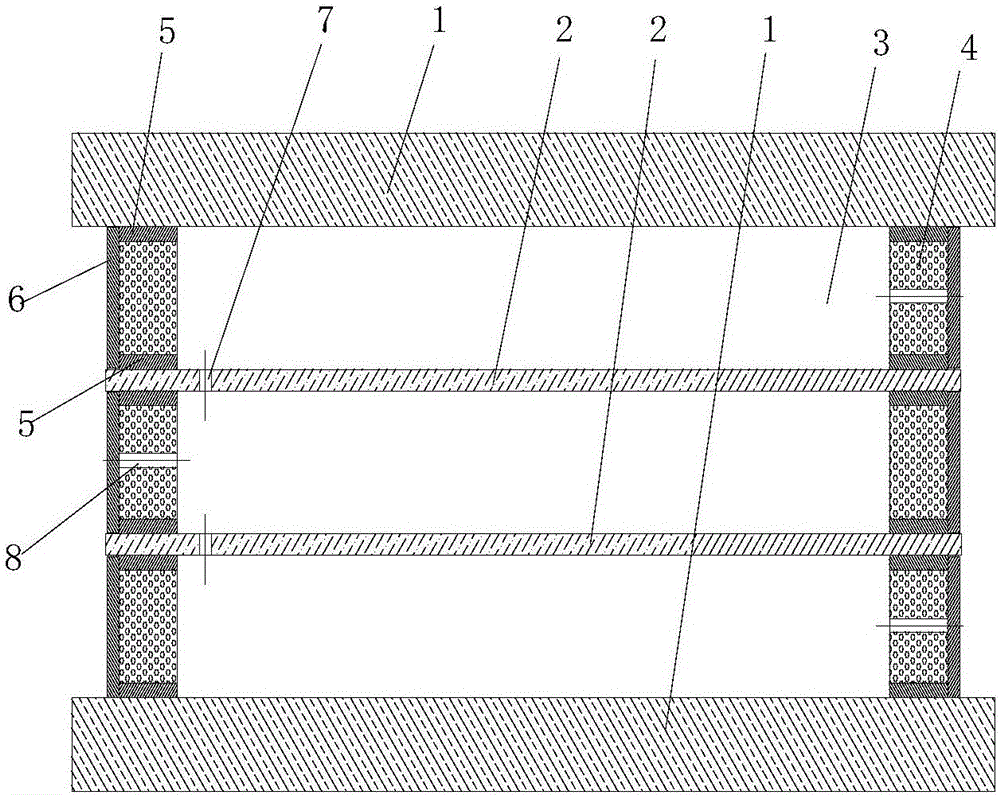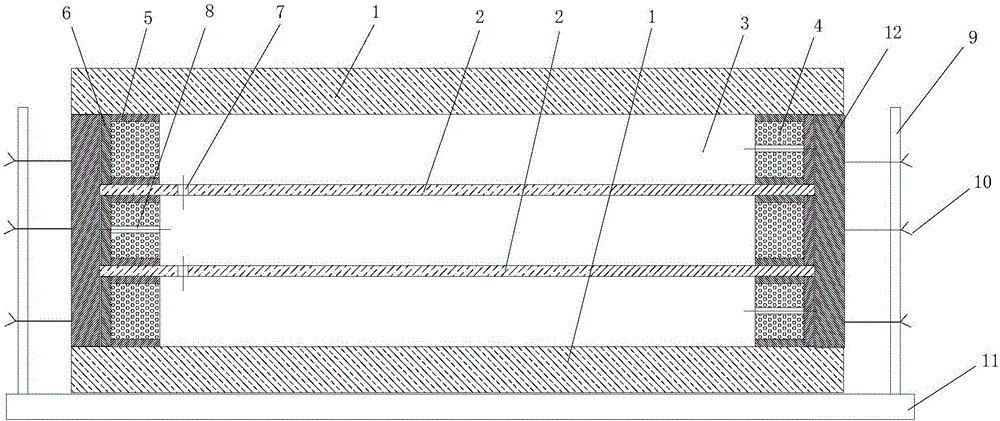Production process of two-glass three-cavity hot mirror film hollow glass
A production process, two-glass three-cavity technology, applied in windows/doors, building components, building structures, etc.
- Summary
- Abstract
- Description
- Claims
- Application Information
AI Technical Summary
Problems solved by technology
Method used
Image
Examples
Embodiment Construction
[0025] The present invention will be further described in detail below in conjunction with the embodiments.
[0026] like figure 1 The shown two-glass three-chamber thermal mirror film insulating glass, its configuration:
[0027] 6 double silver LOW-E tempered + 12A junction + hot mirror film + 12A junction + hot mirror film + 12A junction + 6 ultra-white steel
[0028] The preparation process is as follows:
[0029] 1. The 100,000-level purification compounding room is used, and the temperature is required to be controlled within 20 ± 3 °C and the relative humidity is within 25%; to prevent the impact of the space environment from contaminating the thermal mirror film layer; and to facilitate the storage of the thermal mirror film.
[0030] 2. Before laying the film, the staff should wear special gloves, masks and protective clothing to prevent the oxidation of the film layer caused by sweat and spit.
[0031] 3. According to the requirement of the depth of the second sea...
PUM
 Login to View More
Login to View More Abstract
Description
Claims
Application Information
 Login to View More
Login to View More - R&D
- Intellectual Property
- Life Sciences
- Materials
- Tech Scout
- Unparalleled Data Quality
- Higher Quality Content
- 60% Fewer Hallucinations
Browse by: Latest US Patents, China's latest patents, Technical Efficacy Thesaurus, Application Domain, Technology Topic, Popular Technical Reports.
© 2025 PatSnap. All rights reserved.Legal|Privacy policy|Modern Slavery Act Transparency Statement|Sitemap|About US| Contact US: help@patsnap.com



